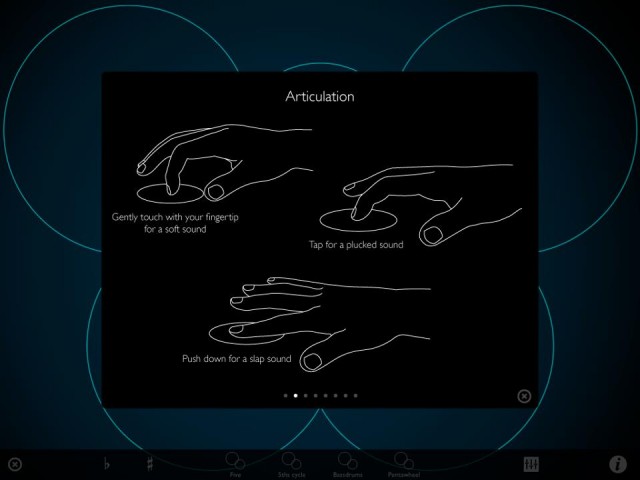
Orphion is an instrument, merging ideas from percussion and strings into something you can play on the iPad. And now you can create your own layouts and tunings. Images courtesy the developer.
Design is the art of compromise. And so, as the touch tablet asks you to sacrifice some things – velocity sensitivity, physical separation, tactile feedback – it gives back the ability to produce freeform interfaces. The iPad’s downside is that it is a piece of undifferentiated glass; its upside is that that glass can transform into anything you like. That makes it a bit puzzling when it is reduced to a set of fake knobs and faders, which has the advantages of neither physical hardware nor the iPad’s open-ended possibilities.
When it was first produced, I praised Orphion as an instrumental, expressive solution. It uses the one parameter you do have – finger position – to produce nuanced differences in notes. It can then become an instrument that’s a hybrid of percussion and string instrument.
If Orphion was a fascinating proof of concept before, a year later it delivers on what many most wanted. At last, you can create your own layouts of pads, even adding micro tonality. You can download layouts from the software’s site, as well.
I can’t think of another interface at the moment that provides this much free experimentation. You could, theoretically, make up new pitch layouts for each performance. You could find a single layout and get really good at that, practicing it as you would a new instrument. Or, you might use this as a canvas with which to experiment with different designs, perhaps even realizing your favorite later in hardware and letting the iPad be the prototype.
Orphion has been steadily adding other features, too. The current version lets you stream via Audiobus, record and share files, and send MIDI, among other features. There are copious tutorials on the site. And you get all of this for an absurdly-cheap US$2.99.
Thanks to developer Bastus Trump for the ongoing work:

Orphion cleverly uses gestures and finger position to add articulation, where the iPad glass otherwise would not do so.

Among various options, Audiobus, and (seen here, from a development build prior to its release) MIDI.

